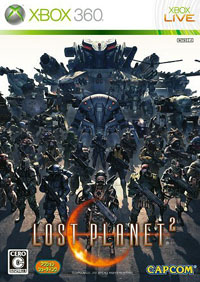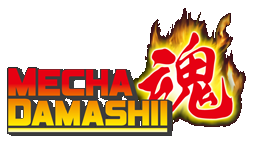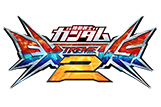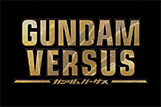Reviews: Lost Planet 2 (8/10)
Posted on : 23-05-2010 | By : Cacophanus | In : Reviews
Hardware: PlayStation 3, Xbox 360
4
 Over the past five years or so there’s been a palpable trend within gaming in the West. Palpable in the sense in that it fundamentally affects the functional framework of the games themselves, to the extent that this change is almost taken for granted.
Over the past five years or so there’s been a palpable trend within gaming in the West. Palpable in the sense in that it fundamentally affects the functional framework of the games themselves, to the extent that this change is almost taken for granted.
In the scramble for supposed mainstream appeal more and more games have opted to take a standardised approach to gaming functionality. On the one hand this allows for a much more accessible learning curve and an implicit understanding of how a game will operate. The down side to this is that ultimately many games end up playing the same.
Bucking this trend is also very difficult as much of the mainstream press get pretty worked up when a game requires them to learn something new. This, to be fair, isn’t their fault as they often have to cover multiple games in a ridiculously short amount of time. As such, due to the way that the gaming press operates, functional standardisation is something that is critically welcomed.
So when something as brilliantly wrought as Lost Planet 2 comes along, with its immense number of fascinating nuances and insightful design choices, it receives coverage that’s very much distorted and more than a little bit unfair on account of how the gaming press is structured. As such, we feel compelled to address this issue; as Lost Planet 2 is really quite bloody amazing.
The original Lost Planet was an interesting though flawed game. The surreal narrative aside, the main issue was how the player was expected to manage their Thermal Energy (or T-ENG) supply. As the player was placed within the bitterly cold wastes of E.D.N. III and needed the T-ENG to survive. This meant your energy supply would slowly decrease and constantly needed replenishing and woe betide the moment you decided to don any of the game’s wonderful mecha, known as Vital Suits, as your energy would be sucked bone dry in double quick time. In short, the original game gave you a huge setting to play with but maddeningly metered it out through a very restrictive approach to managing the main currency the game required in order to operate.
On its release though, this issue wasn’t the problem the press had. No, their beef was the supposed bald faced arrogance on the part of Capcom to make a third person shooter that didn’t use standardised controls. Unfortunately for Lost Planet 2, this refreshing and unique approach has also been similarly criticised. As you’d expect though, they’ve rather missed the point.
Lost Planet 2 is set ten years after the events of the previous game and the world of E.D.N. III has changed dramatically. To the extent that the planet now sports jungles as well as deserts. The warmer climate also means that the player’s management of their T-ENG is far less restrictive. This means that your T-ENG doesn’t deplete over time and when you take damage you can use your Harmonizer, by pressing start, to convert T-ENG back into health. There is a penalty for this though, as using your T-ENG in mission will affect your final mission grade.
Entering a Vital Suit is also no longer penalised in terms of T-ENG consumption either, which makes the mecha combat all the more engaging as you can hold onto a VS for as long as your skill will allow. In addition, there is an added risk/reward element of being able to repair your VS if it takes too much damage – as often you’ll be in the middle of a fire fight when you break out the tool kit.
The big and most noticeable departure from the first game is how the singleplayer campaign has been structured. Unlike the original where you play as a lone protagonist, in this game you always have allies to help you out. These allies can also be swapped out for human players online and this is when Lost Planet 2 merges with something akin to the Monster Hunter games. This is especially true when you start facing off against the massive Category G Akrid dotted across the game. However, all this online multiplayer content aside you can still play the game through offline with the AI helping you out.
The whole game is split into 6 episodes with a variety of chapters within each. In each chapter there are often multiple of missions. Each mission is normally triggered by reaching a point further into the level (denoted by a red line), upon crossing the line the next mission in the sequence is loaded. This is only annoying when you fail mid-mission as you are rebooted to the start of the chapter, not the mission. Thankfully, a full on “Game Over” is quite hard to achieve and this is down to the interesting data posts spread across each level.
Data posts have to be activated by your or your teammates, upon activation they give you a boost of T-ENG, fill out the area map on the HUD and most important of all; give you an increase in the battle gauge currency. This means that each time you die you lose currency from the battle gauge, so searching for and activating the data posts also gives the player extra lives effectively. In addition, they also act as spawn points when you die (something that’s very handy on most of the levels, as they are often quite massive). Once the battle gauge runs out, that’s when you have to restart the chapter from scratch.
This is something that has drawn criticism elsewhere, as the AI has been accused of being useless and just getting in the way resulting in unfair and untimely deaths. This is true only if you play the game in the mindset of a lone protagonist, as per the first game. If you stick with the AI and work with them then you won’t have any issues, even on one of the later train missions where mistakes cost you dearly – sticking with the AI or at least keeping a mental note of where they are is very important. In truth, if you’re perceptive enough, the AI is actually very helpful – giving you T-ENG and generally saving your bacon in a firefight. Put simply, sticking with your teammates is essential for survival.
This is not to say that the campaign has been neutered in any way, as ultimately it feels as crafted as the original and the sheer variety in levels and their layouts is remarkably refreshing (as there are missions set underwater as well as in space). The narrative is also more balanced and as you play with the various factions across E.D.N. III, the plot unfolds in a manner not too dissimilar to something like Rashomon; with various viewpoints on the story culminating in a grand finale of sorts. It’s not an overt narrative though and is obviously meant more to add a broader context to the game’s events rather than give an obvious justification for them.
Naturally, the remaining multiplayer modes in the game are very well made and due to the overall co-op focus of the main campaign feel like a natural progression. Not to mention that many of the singleplayer levels double up as multiplayer maps, meaning that what you learned in the campaign is very much applicable in multiplayer.
The Vital Suits are utterly brilliant throughout and what with a select few now offering transformation, mastering the controls of each is a game in its own right. This is not to say that the handling for the mecha is any way unwieldy but that each of their nuances require a fair amount of investigation. The only issue with the later is that in the pause menu, where much of the useful controller mappings are laid out, the VS are designated via an alpha-numerical code. This normally wouldn’t be a problem but the game normally refers to the VS’ by their nicknames rather than their codes. Thankfully, once inside a VS the pause menu auto-selects the information you require – so that’s at least something.
The VS are aptly named though as they are very much vital for progression. Whilst you are very potent within a VS’ shell you are by no means invincible. Much of VS piloting is based around deft movement and learning to be where large ordnance isn’t. This is what brings me onto the final part of what makes Lost Planet 2 far more tactical than at first glance.
Almost every major action you undertake has an animation penalty, from the (very useful) grapple to entering or even repairing a VS. This is obviously very intentional and is meant to force the player to really think about their actions rather than just being blindly trigger happy. The grapple is an excellent example of this, as it can be used to great effect but is not really able to offer an instant escape when you’re in a crossfire. Instead, the game expects you to not get into a crossfire in the first place and use your team mates to give cover. What transpires is a subtle herding of the player to be more tactical and use their skills discerningly.
As a game then, Lost Planet 2 is very much meant for a broader type of gamer and one that relishes new functional systems to play and experiment with. It’s also a remarkably ambitious game in terms of how it’s approached multiplayer and allowed aspects of that to be embedded within the main campaign. Overall then this is a game that has to be learned and gradually mastered. It’s not a twitchy piece of brain dead standardised nonsense, far from it in fact. For the mecha gamer though, Lost Planet 2 offers something wonderful; a showroom filled with lots of shiny VS’ and each of them with the keys still in the ignition.
Tamashii: 8/10











Agreed on the sameness of modern games. I really enjoyed the demo of Lost Planet 2 and the variation among the vital suits; it reminded me of Metal Warriors, just without a totally combat-neutered pilot.
A lot of the criticism and complaints LP2 gets are ones that most westerners complain about with Monster Hunter, which incidentally is the same design team out of Capcom if I’m not mistaken. Even so, I just finished the campaign of LP2 myself and still am going back running through to find all the little secrets and nuances as well as occasionally taking part in the online vs.
Been re-playing the first LOST PLANET in preparation for the sequel. I did like the demo, and will probably rent it first before purchasing.
I do agree with the AI–during the demo, if I acted like a lone wolf, I did find the AI lacking. However, when I treated them like _actual_ teammates and stuck close to them–in other words, when we worked as a team–then it worked, and worked very well.
Plus, I dunno…I always thought the VS reminded me of the ATs from VOTOMS, which is definitely not a bad thing…
Great review! I agree with you about the AI being not that bad. Still, maybe it’s not worth it for Capcom to work too hard on it. Much like RE5 -if the AI is just so-so it sort of incentivizes people to go online and play. Not saying they are gimping the AI, just that they are trying to make a different type of game so it didn’t get as much love.
LP2 is great, and I hate to see people write it off because it controls just a little differently. I feel like that stuff has been a hurdle for a lot of Japanese games, like AC and Monster Hunter.
Yeah! Metal Warriors, an awesome game and a hidden gem!